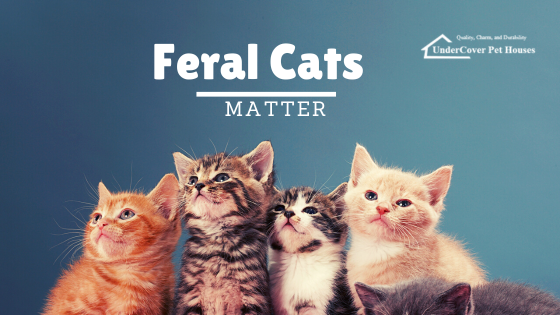 Loading... Please wait...
Loading... Please wait...Blog - stray cats
Feral Cats Matter: Their Surprising Role in Urban Biodiversity
Posted by Danny MacDonald on 2023 Jun 27th

Often feral cats are seen as a challenge in urban landscapes. While their presence may seem odd, feral cats influence urban ecosystems.
As such, it’s essential to recognize the significance and the roles feral cat’s play. Here are some reasons why feral cats and their unique contributions to biodiversity are imperative.
Feral Cats in Urban Areas
Feral cats refer to cats that are born in the wild. Because they are adaptable to nature, feral cat populations flourish in cities worldwide. Also, studies estimate that numerous feral cats roam urban areas, making them an extensive presence.
Understanding feral cat numbers and distribution is crucial for managing their impact on the surrounding ecosystem, ensuring species co-existence in urban habitats.
Ecosystem Health Indicators
By monitoring feral cat populations, it’s possible to gain knowledge and insights into the overall health of urban environments. Changes in these feline behaviors and abundance can serve as guides for the broader changing aspects of environmental systems.
For example, a surge in feral cat numbers may suggest a drop in natural prey availability, pointing to potential food web imbalances. By learning about feral cats, researchers can better understand the impacts of habitat degradation, pollution, and other activities on urban wildlife and ecosystems.
Natural Pest Controllers
While feral cats are known to threaten the small wildlife ecosystem, they also act as natural pest controllers. Yes, feral cat hunting abilities help control rodent populations such as rats and mice, which are common pests in urban areas. When such rodent populations are kept in check, feral cats minimize the risk of disease transmission and crop damage.
Some studies suggest that feral cat presence can decrease rodent populations, providing an eco-friendly substitute to chemical pest control approaches.
Drivers of Adaptive Evolution
Cats have been introduced to various regions worldwide, creating unique environmental interactions. Feral cats employ selective pressure on native wildlife populations, contributing to adaptive evolution.
Over time, indigenous species may develop adaptations to escape feral cat predation, such as changes in behavior, camouflage, or defensive mechanisms. These evolutionary processes contribute to a more resilient and diverse urban ecosystem where native species coexist with feral cats.
The Human-Feline Connection
Engaging with feral cat colonies can foster a sense of compassion and empathy within communities. Programs such as Trap-Neuter-Return (TNR) aim to manage feral cat populations humanely. TNR involves trapping feral cats, sterilizing them, and returning them to their original habitat. By implementing TNR procedures, communities can address concerns about feral cat populations while ensuring their well-being.
Additionally, community involvement in caring for feral cats can promote responsible pet ownership, encouraging conversations about the importance of wildlife conservation and the co-existence of humans and animals in urban environments.
Bottom Line
Feral cats bring incredible gains to urban biodiversity. It is vital to recognize their role as markers of ecosystem status, drivers of adaptive evolution, natural pest controllers, and catalysts for compassionate communities.
By embracing feral cats and implementing effective management strategies, such as TNR programs, we can ensure the preservation of urban biodiversity for future generations. The feral cat's place in the urban ecosystem is a testament to the complexity and nature interconnections, reminding us of the need for compassion and sustainable practices towards all living beings.
Differences Between Feral, Stray, and Domesticated Cats
There are three main categories, domesticated, feral, and stray cats, which can be confusing. The reason is that each of these terms refers to different cat types with unique lifestyles and characteristics.Understanding their differences is crucial, as it can help us better interact and care for these feline companions.This blog post will look at the [...]
The Difference Between Stray and Feral Cats ….and What You Can Do to Help
The feral and stray cat population has reached epidemic proportions in many communities across the country. Recent studies estimate the current feral and stray cat population to be between 30-40 million. Travel down any street in any town, and it is likely you will run across one or more of these poor, adorable little creatures in search of [...]
